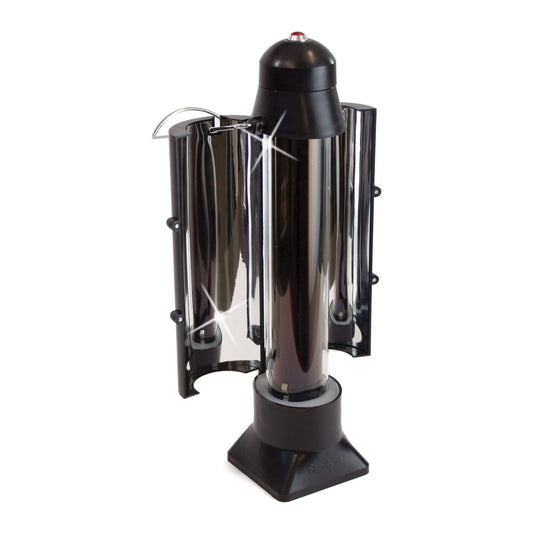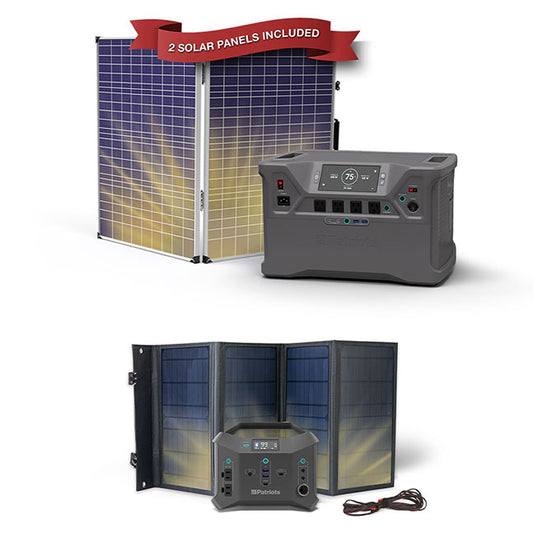
Should We Have Expected Anything Less From 2020?

2020 has been one for the ages. And not in a good way. A global pandemic, civil unrest, out-of-control wildfires… the list goes on.
And don’t even get me started on extreme weather. On the other hand, maybe we should recap a few of the major storms that have occurred this year.
There have been plenty of them. And power outages are always the common denominator.
Considering the way this year has gone, it’s not surprising we’ve been bombarded with a variety of deadly, destructive storms.
Tennessee Tornadoes Got It Started
March came in like a lion in 2020. On the night of March 2 and the morning of March 3, a powerful tornado outbreak hit western and middle Tennessee.
By the time it had ripped through the area, two dozen people were dead and 309 injured. More than 70,000 homes and businesses lost power.
Northern Nashville was struck by a tornado that wound up being the sixth costliest in U.S. history.
A few other tornadoes were confirmed in Missouri, Alabama and Kentucky on those days. They pushed the damage total up to $1.6 billion.
Winds Up to 175 MPH
The worst of the tornadoes was an EF4 in Putnam County, Tennessee. With wind speeds of up to 175 miles per hour, it caused 19 deaths and 87 injuries.
Moving along U.S. 70 North, it caused significant damage to neighborhoods. After traveling more than eight miles, it stopped just before downtown Cookeville.
A total of 10 tornadoes rocked Tennessee, including an EF3 that smacked Nashville and surrounding cities. Nearly 50 buildings in and around Nashville collapsed.
Many homes, businesses, schools and churches were heavily damaged by the storm that stretched nearly two-thirds of a mile wide.
Derecho Races 770 Miles
Fast forward to August 10 and 11. That’s when a big chunk of the northern portion of the U.S. was slammed by a derecho.
This line of intense and swiftly moving windstorms flattened trees, sheds and crops. It included wind gusts of up to 112 mph.
Over a 14-hour period, it traveled 770 miles. From southeastern South Dakota into Ohio. Damaging homes along the way and causing power outages for more than 1 million customers.
One woman in Indiana died when her mobile home rolled over. In Iowa, a man was killed when struck by a falling tree as he was riding his bicycle.
Here’s what Marshalltown, Iowa Mayor Joel Greer told the New York Times. “Everybody in town is without power except those with a generator.”
Iowa Crops Decimated
Victor Gensini, a Northern Illinois University meteorology professor, said, “This is our version of a hurricane.”
Tina Hoffman is a MidAmerican Energy spokesperson. She said, “It’s one of the worst storms we’ve seen in terms of total number of customers impacted.
“There is a lot of damage. And unfortunately this is not something that can be repaired very quickly. It’s going to be a while.”
There was also considerable crop loss in Iowa. In Chicago, downed power lines caused fires.
Hurricane Laura Slams Louisiana
Before August was over, another catastrophic weather event pummeled parts of America.
As measured by maximum sustained winds, Hurricane Laura tied the all-time record for strongest hurricane to make landfall in Louisiana. The original record was set in 1856.
Landing in Cameron, Louisiana on August 27, the Category 4 storm caused more than two dozen deaths in the U.S. Plus approximately $10 billion in damages. Mainly in southeastern Texas and southwestern Louisiana.
Losing electrical power were more than 615,000 people in Louisiana. And no wonder. The storm featured winds of up to 150 miles per hour.
Carbon Monoxide Poisonings Result
At least eight of the deaths attributed to Hurricane Laura in the U.S. were from carbon monoxide poisoning.
John Bel Edwards is governor of Louisiana. He said the storm “left a long trail of catastrophic devastation.”
The only good thing about Hurricane Laura is that it weakened quickly after making landfall.
A few days before Laura arrived, Hurricane Marco turned into a tropical storm. It made landfall at the mouth of the Mississippi River.
Hurricane Sally Follows
Three weeks of relative calm followed Hurricane Laura. That ended abruptly when Hurricane Sally burst in. This was the first hurricane to make landfall in Alabama since 2004.
The Category 2 storm had a sustained wind speed of 105 mph. It was the 18th named storm of this record-breaking Atlantic hurricane season.
Taking the brunt of the storm was the area between Mobile, Alabama and Pensacola, Florida. More than 20 inches of rain fell and several tornadoes were spawned.
More than 500,000 customers lost power in four states. Damage totals were estimated to be at least $8 billion.
Slow Moving Means More Rain
In anticipation of Hurricane Sally, states of emergencies were declared in Louisiana, Mississippi and Alabama.
Evacuation orders were issued for parts of New Orleans and Mississippi. Power lines and trees were downed in numerous places.
One of the biggest problems with this storm was its slow movement. As a result, Pensacola got over 24 inches of rain. And the storm surge reached more than five feet.
Livelihoods were affected as well. Wind and water destroyed farmers’ crops, and structures were destroyed.
So no, it’s not surprising that 2020 brought with it an unusual number of disastrous storms. But it is yet another reminder of how important it is to be prepared with back-up power.
Featured Products
- Regular price
- $699.95
- Regular price
-
- Sale price
- $699.95
- Unit price
- per
- Regular price
- $2,999.95
- Regular price
-
- Sale price
- $2,999.95
- Unit price
- per
- Regular price
- From $29.95
- Regular price
-
- Sale price
- From $29.95
- Unit price
- per
- Regular price
- From $29.95
- Regular price
-
- Sale price
- From $29.95
- Unit price
- per
- Regular price
- $2,499.95
- Regular price
-
- Sale price
- $2,499.95
- Unit price
- per
- Regular price
- $499.95
- Regular price
-
- Sale price
- $499.95
- Unit price
- per
- Regular price
- $999.95
- Regular price
-
- Sale price
- $999.95
- Unit price
- per
- Regular price
- From $29.95
- Regular price
-
- Sale price
- From $29.95
- Unit price
- per
- Regular price
- $2,999.95
- Regular price
-
- Sale price
- $2,999.95
- Unit price
- per
- Regular price
- From $2,796.95
- Regular price
-
$8,390.95 - Sale price
- From $2,796.95
- Unit price
- per
- Regular price
- $4,999.95
- Regular price
-
- Sale price
- $4,999.95
- Unit price
- per
- Regular price
- From $129.95
- Regular price
-
$259.95 - Sale price
- From $129.95
- Unit price
- per
- Regular price
- $847.95
- Regular price
-
$897.95 - Sale price
- $847.95
- Unit price
- per
- Regular price
- $1,999.95
- Regular price
-
- Sale price
- $1,999.95
- Unit price
- per
- Regular price
- $279.95
- Regular price
-
- Sale price
- $279.95
- Unit price
- per
- Regular price
- From $69.95
- Regular price
-
- Sale price
- From $69.95
- Unit price
- per
- Regular price
- $29.95
- Regular price
-
- Sale price
- $29.95
- Unit price
- per
- Regular price
- $849.95
- Regular price
-
- Sale price
- $849.95
- Unit price
- per
- Regular price
- $249.95
- Regular price
-
- Sale price
- $249.95
- Unit price
- per
- Regular price
- $199.95
- Regular price
-
- Sale price
- $199.95
- Unit price
- per
- Regular price
- $129.95
- Regular price
-
- Sale price
- $129.95
- Unit price
- per
- Regular price
- $114.95
- Regular price
-
- Sale price
- $114.95
- Unit price
- per
- Regular price
- $69.90
- Regular price
-
- Sale price
- $69.90
- Unit price
- per
- Regular price
- $19.95
- Regular price
-
- Sale price
- $19.95
- Unit price
- per
- Regular price
- $3,499.95
- Regular price
-
- Sale price
- $3,499.95
- Unit price
- per

























Comments
Steve - October 05, 2020
Thanks for being there!!!